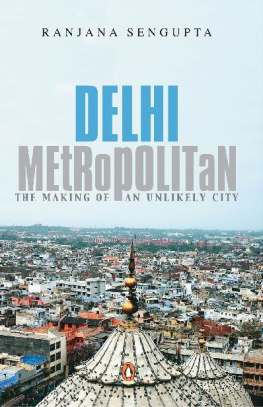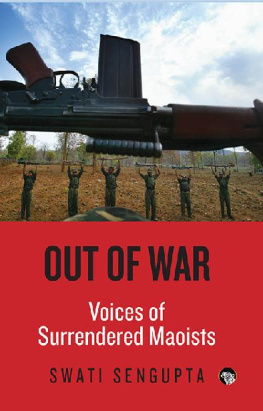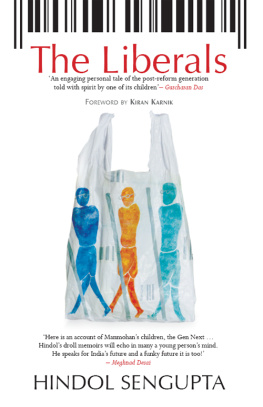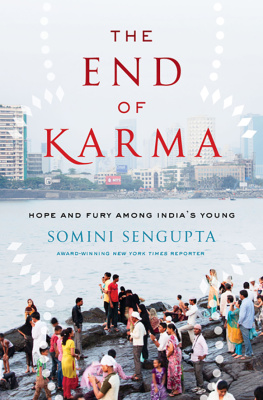Arunabha Sengupta - Elephant in the Stadium
Here you can read online Arunabha Sengupta - Elephant in the Stadium full text of the book (entire story) in english for free. Download pdf and epub, get meaning, cover and reviews about this ebook. year: 2022, publisher: Pitch Publishing Ltd, genre: Politics. Description of the work, (preface) as well as reviews are available. Best literature library LitArk.com created for fans of good reading and offers a wide selection of genres:
Romance novel
Science fiction
Adventure
Detective
Science
History
Home and family
Prose
Art
Politics
Computer
Non-fiction
Religion
Business
Children
Humor
Choose a favorite category and find really read worthwhile books. Enjoy immersion in the world of imagination, feel the emotions of the characters or learn something new for yourself, make an fascinating discovery.
- Book:Elephant in the Stadium
- Author:
- Publisher:Pitch Publishing Ltd
- Genre:
- Year:2022
- Rating:5 / 5
- Favourites:Add to favourites
- Your mark:
- 100
- 1
- 2
- 3
- 4
- 5
Elephant in the Stadium: summary, description and annotation
We offer to read an annotation, description, summary or preface (depends on what the author of the book "Elephant in the Stadium" wrote himself). If you haven't found the necessary information about the book — write in the comments, we will try to find it.
Elephant in the Stadium — read online for free the complete book (whole text) full work
Below is the text of the book, divided by pages. System saving the place of the last page read, allows you to conveniently read the book "Elephant in the Stadium" online for free, without having to search again every time where you left off. Put a bookmark, and you can go to the page where you finished reading at any time.
Font size:
Interval:
Bookmark:



First published by Pitch Publishing, 2022
Pitch Publishing
A2 Yeoman Gate
Yeoman Way
Durrington
BN13 3QZ
www.pitchpublishing.co.uk
Arunabha Sengupta, 2022
Every effort has been made to trace the copyright.
Any oversight will be rectified in future editions at the earliest opportunity by the publisher.
All rights reserved under International and Pan-American Copyright Conventions. By payment of the required fees, you have been granted the non-exclusive, non-transferable right to access and read the text of this e-book on-screen. No part of this text may be reproduced, transmitted, downloaded, decompiled, reverse-engineered, or stored in or introduced into any information storage and retrieval system, in any form or by any means, whether electronic or mechanical, now known or hereinafter invented, without the express written permission of the Publisher.
A CIP catalogue record is available for this book from the British Library
Print ISBN 9781801500944
eBook ISBN 9781801502603
--
eBook Conversion by www.eBookPartnership.com
TO
The teenaged versions of Anirudha Roy and
Anindya Tarafdar,
with whom I discovered the joys of cricket
FIRST AND foremost, Abhishek Mukherjee. He has been my collaborator, colleague and friend for more than a decade, and we have even penned a book together. Having decided on a volume of this expanse and ambition, I doubt I could have asked for a better sounding board. The end product would not have been possible without his thorough involvement that encompassed insights, suggestions, fact-checking, an incredible capacity for unleashing trivia linked to events in cricketing history, and enormous help with the appendices. He even compiled the most complex and valuable table in the appendix all by himself.
B. Sreeram is always one of a kind. When every known and unknown source of cricket history fails to cough up what one is looking for, one approaches Sreeram. If Sreeram cannot find it, the chances are a cricketing 99.94 per cent that it did not happen.
Mihir Bose not only did me the immense honour of writing the foreword to the book, he keeps producing splendid volumes covering subject matter closely related to this very work. Looking beyond by standing on the shoulders of giants has never made more sense.
Dilip Vengsarkar, Mike Gatting, Karsan Ghavri, Rahul Mankad, John Jameson and Dennis Amiss were extremely forthcoming in helping me reconstruct the pieces of days long gone by.
Sumit Gangopadhyay is a researcher of rare pedigree and his facility in digging up hitherto unpublished scorebooks from dusty, obscure archives is unmatched. His insights into the socio-political history of India were equally invaluable.
Qamar Ahmed and Vijay Lokapally are two very respected veteran journalists who went out of their way to help with the project.
David Frith, Stephen Chalke and the late Peter Wynne-Thomas were always around for me to dip into their enormous stores of knowledge and also to provide the contemporary accounts of those days.
Mayukh Ghosh and Michael Jones are two others who can be trusted to find missing pieces in a historical jigsaw, which they frequently did.
In the pages that follow we will come across numerous voices, of people who had a ringside view of the world in 1971, some of whom were at The Oval on the final day, and all of whom were touched by the event in one way or the other. I cannot begin to express my gratitude to all those splendid souls.
The Pitch team has always been a pleasure to work with and I am delighted to have been associated with them for this project.
In Richard Whitehead I had an editor who combined scrupulous editing with the most insightful of suggestions and it was a pleasure to work with him.
And finally Coco, a delightful, near-divine companion for nearly 15 years, who provided silent encouragement with a reassuring wag of her luxurious golden tail through the many months that I worked on the book, but was no longer there when it was completed.
BACK IN 1990 when I published my book A History of Indian Cricket, the first narrative history of the Indian game, my main problem was the paucity of material in India to which I could refer. I had to often rely on English sources. Since then, much has changed. A whole new generation of Indian writers has emerged, writing about the game in India. Arunabha Sengupta is one of them. But what sets him apart is that he often takes a very dramatically different approach to the writing of cricket history. His previous two books, Apartheid: A Point to Cover and Sachin and Azhar at Cape Town, illustrate that beautifully. But even by the standards set by these two books, Arunabha breaks fresh ground with this book. The title itself proclaims that.
Back in 1971 India made history by winning the Oval Test, their first victory over England in England and also their first series win in England, 39 years after making their Test debut. For me it was a very special moment. I was then a chartered accountancy student in London. I had grown up watching and reading about awful Indian defeats both at home and abroad, particularly in England. On that tour I was at Lords for the first Test where India came close to winning. And while I could not go to Manchester for the second, I kept hoping that rain would continue on the final day as it did to save India. I was at The Oval, which was not far from my bedsit at Clapham Common. The Oval Test saw an elephant paraded round the ground. In A History of Indian Cricket, I started with that victory at the Oval calling my first chapter The Day the Elephant Came to the Oval.
Arunabha has to an extent borrowed that title in calling his book Elephant in the Stadium, but in doing so he has cleverly set a new course. He has described the entire epoch-making 1971 tour, starting with the first match against Middlesex at Lords, but woven into the descriptions of what happened during the tour on the field of play an entire gamut of historical facts that both take the story forward from 1971 and back to the start of Indian cricket.
But what makes this even more special is that during this journey Arunabha, like one of those fabled Indian taxi drivers, take us down many byways which means we read not just about events on the field in 1971, but events going back to the start of Indian cricket and extending far beyond cricket to society, culture, India-British history, activities of far-right groups in Britain, the genocide carried out by the Pakistan army in then east Pakistan in 1971, which led to war between India and Pakistan and the Indian army creating a new country, Bangladesh, and even the prosecution of the D.H. Lawrence novel Lady Chatterleys Lover. Churchill and Gandhi also make appearances. And while at first glance all this in a cricket book seems absurd, Arunabha shows how it is relevant to the story of Indian cricket. This makes it a path-breaking book.
The thesis Arunabha presents is that the chronicle of cricket can be skewed due to partial re-telling. One of the best examples he gives is what is known in cricket as Mankading. This refers to what Vinoo Mankad, one of the greatest all-rounders in the game, did during Indias first tour to Australia in 1947/48. As he ran in to bowl, seeing the Australian batsman Bill Brown backing up out of his crease, he first warned him and then when he did it again ran him out and under the laws of the game the batsman had to be given out. The Australians dubbed it Mankading, treating it as something that was underhand and not sportsmanlike. Despite Don Bradman finding nothing wrong with what Mankad had done, this still rankles so much in Australia that, less then ten years ago, Vinoos younger son Rahul Mankad, who was attending a formal luncheon during an Australia-India Test match at Melbourne, was introduced by Paul Sheahan, then president of the Melbourne Cricket Club, as son of the notorious Mankad. Yet, as Arunabha points out, Mankading had been done by many others and went back a long time. It illustrates his thesis about how cricket history is only a partial telling of the story, and who tells the story often dictates what is told, thereby often distorting the picture and creating a false narrative.
Font size:
Interval:
Bookmark:
Similar books «Elephant in the Stadium»
Look at similar books to Elephant in the Stadium. We have selected literature similar in name and meaning in the hope of providing readers with more options to find new, interesting, not yet read works.
Discussion, reviews of the book Elephant in the Stadium and just readers' own opinions. Leave your comments, write what you think about the work, its meaning or the main characters. Specify what exactly you liked and what you didn't like, and why you think so.













